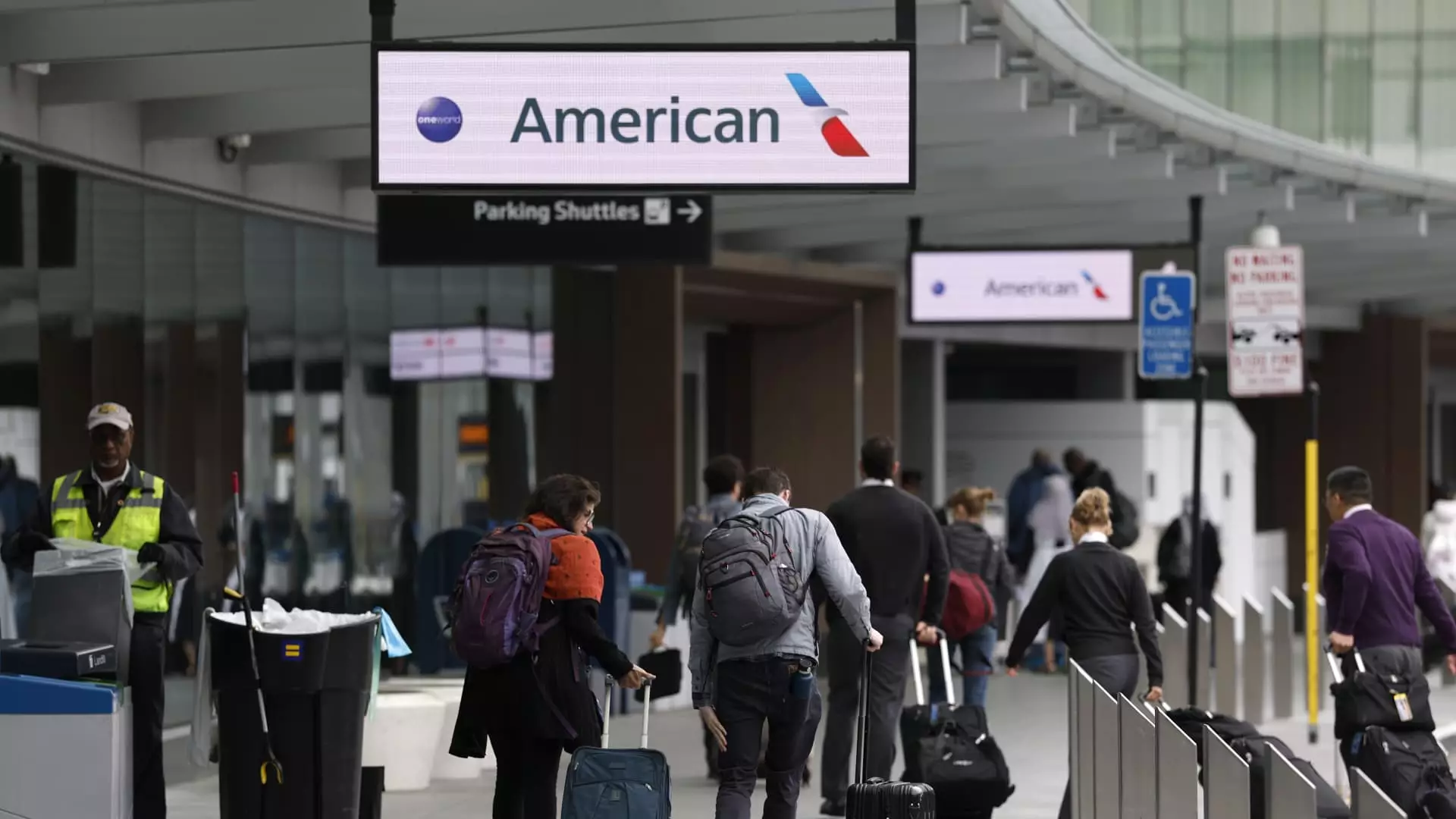As the airline industry grapples with shifting consumer behavior and economic tremors, recent discussions among key players reveal a daunting truth: a recession in the aviation sector may be on the horizon. Throughout a series of earnings calls this month, top executives have voiced their trepidations, suggesting that consumer appetite for domestic travel appears to be waning. The troubling mix of unpredictable political and economic landscapes, customer sentiment, and fluctuating demand presents a perfect storm for American carriers, prompting a critical reassessment of growth forecasts set earlier this year.
The Role of Economic Uncertainty
The essence of economic uncertainty cannot be overstated. Robert Isom, CEO of American Airlines, highlighted that consumers are often reluctant to make significant purchases, such as vacations, amidst a climate strewn with unpredictability. With the specter of declining disposable income and a wavering economy hovering like a dark cloud, many potential travelers find themselves hesitating. This landscape is exacerbated by concern over tariffs, trade disputes, and recent government policies that have amplified consumer reluctance. In a sector that thrives on the comfort of predictability and trust, passengers are hesitating, altering their travel plans and ultimately impacting the bottom line.
Airlines Scramble: Capacity Cuts and Price Drops
In response to the foreboding outlook, major airlines such as Delta Air Lines, Southwest Airlines, and United Airlines are adjusting their capacity growth projections. The dire need to adapt to the current market conditions has led to the withdrawal of optimistic financial forecasts for 2025. With an oversupply of seats and insufficient demand, these companies find themselves on the defensive. Reduced capacity growth translates into lower ticket prices, with recent data revealing that airfare dropped by 5.3% in March alone. Such price reductions may seem advantageous for consumers, yet they underscore a deeper crisis within the industry.
Corporate Travel: The Canary in the Coal Mine
One of the most pivotal areas to monitor is corporate travel, traditionally viewed as a stabilizing force for airlines. A resurgence in business travel can often bolster revenues, especially from less price-sensitive customers who tend to book last minute. Unfortunately, the initial optimism surrounding corporate travel growth has begun to fizzle, as noted by Delta’s CEO, Ed Bastian. Amid rising economic pressures, businesses are tightening their belts, significantly diminishing travel budgets. This is a harbinger of troubling times, as any downturn in corporate travel directly affects the operational viability of major carriers.
The Consumer Sentiment Gap
Amid these troubling realities, consumer sentiment plays a crucial role. While the desire to travel remains, it is increasingly marred by hesitance driven by economic fears. With household budgets squeezed more than ever, families are opting to postpone larger expenses. The disconnect between the airline industry’s offerings and consumer capabilities amplifies this dilemma. While many executives remain optimistic, their confidence may be misplaced. Unless addressed, the lingering hesitancy may cement the sector’s downward spiral.
Future Outlook: What Lies Ahead?
Executives remain caught between the need to reassure investors and the grim realities playing out in real-time. With rising competition and the threat of further fare reductions, the industry’s future is increasingly uncertain. Alaska Airlines’ CFO Shane Tackett acknowledged that while demand remains relatively robust, it is significantly below the anticipated levels. If trends continue, airlines may need to brace for more intense competition and the maze of price wars that follow, raising doubts about profitability.
The Silver Lining: Hope Still Exists
Yet, despite these challenges, some executives cling to a sense of hope, citing the return of international travel as a potential counterbalance to domestic woes. With U.S.-based customers continuing to flock overseas, there remains an undercurrent of optimism that stabilizing factors could emerge. The notion that “certainty will restore the economy” offers a glimmer of hope, though it is imperative not to overlook the multifaceted complexities facing the airline sector.
As the airline industry maneuvers through this turbulent landscape, the signs pointing toward a recession are hard to ignore. With CEOs expressing deep concerns about future prospects, it’s evident that a renewed focus on economic stability and consumer confidence is essential for recovery. The road ahead may be fraught with obstacles, yet if addressed appropriately, opportunities for revitalization may still emerge.

